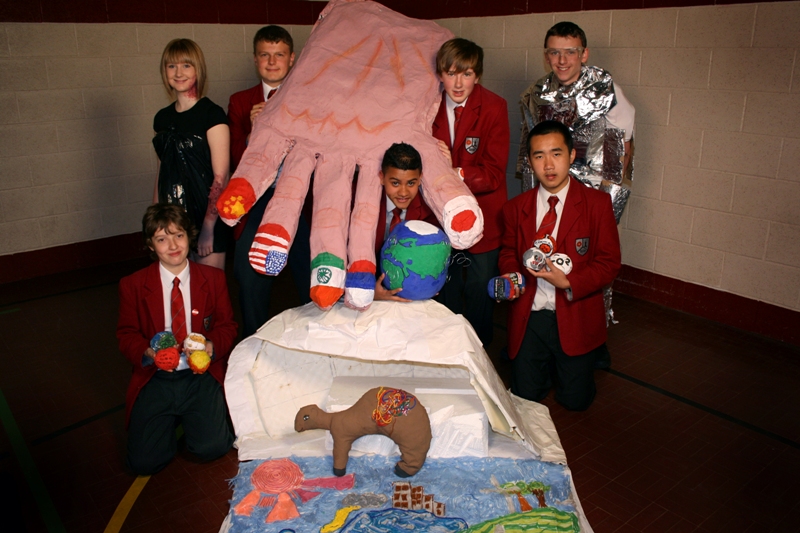Ahead of November’s opening of the Collider exhibition here at the Science Museum, Content Developer Rupert Cole celebrates six decades of research at CERN, the European Organization for Nuclear Research.
This 3D printed gun has a short, but complex history.
Tracey Morgan, Outreach Team Leader, looks back at London’s West End Live event. On Saturday the 22nd and Sunday the 23rd of June, the Science Museum joined Ripley’s Believe It or Not!, London Film Museum, Forbidden Planet, the Theatres Trust, Banqueting House and Benjamin Pollock’s Toyshop along with all of the West End Theatres to celebrate the hugely popular London event West End Live at Trafalgar Square. The Science Museum was glad to be invited back for a 9th year […]
Laura Meade and Ronan Bullock, Outreach Officers in our Learning team, write about the Science Museum’s new partnership with the Prince’s Trust. Earlier this year, we invited musician will.i.am and the Prince’s Trust to the Science Museum to announce a new partnership. Will.i.am recently gave a £500,000 donation to the Prince’s Trust, and we’re using some of this money to work with XL Clubs in schools across the country. The Outreach team has been visiting schools across the country, ‘grossing out’ whole year groups […]
Chloe Vince, volunteer on the Information Age project takes a look at the humble computer mouse, Douglas Englebart’s best-known contribution to modern computing. Since its invention in 1963, the computer mouse has become an iconic image of personal computing. It was designed and developed by visionary engineer Douglas Engelbart who recently passed away on 4th July 2013 at the age of 88. This early version of the computer mouse bears very little resemblance to those that we use today – […]
Sam Potts, Communications Officer at the National Railway Museum writes about a rather special gathering in York for Mallard75. On 3 July 1938 Mallard made history when it became the fastest steam locomotive in the world. The locomotive reached 126mph on the East Coast main line, a record which still stands today, 75 years later. Mallard is a streamlined A4 Pacific, designed by Sir Nigel Gresley to be the flagship locomotive for the London & North Eastern Railway’s Silver Jubilee services. In total […]
Micol Molinari, Learning Resources Project Coordinator writes about the Summer Science Exhibition at the Royal Society. The exhibition runs from 2-7th July and is free entry. Exciting, colourful, inspiring: fancy a little of that this week? You’re in luck. Every year, a specially selected group of researchers and technologists from across the nation, take over the Royal Society building and garden and turn them into an incredible celebration of scientific endeavour – the Summer Science Exhibition – filled with interactive exhibits, games, live demonstrations, prizes, and […]
Dr. Corrinne Burns, Assistant Content Developer in the Contemporary Science team, writes about Listen to your Heart, a Live Science experiment where visitors explore interoception. How good are you at figuring out what people are thinking? Can you put yourself in someone else’s shoes? Alternatively, are you cool and collected? Can you regulate your emotional responses? Surprisingly, researchers think that all these qualities could be related to something called interoception – that is, how good you are at sensing the workings of your inner body, […]

Dani Williams, Project Co-ordinator for the Climate Science Outreach Project, reflects on the success of the three year project as it draws to a close. How do you engage teenagers in climate change? This was our challenge when we launched the Climate Science Outreach Project – a three year project run by the museum in partnership with the National Railway Museum in York, Museum of Science and Industry in Manchester, At-Bristol science centre and the Catalyst Science Discovery Centre. The nationwide project was designed to inspire 13-14 year […]
Roger Highfield, Director of External Affairs at the Science Museum Group, writes about bringing Westminster to the Science Museum. The Science Museum witnessed democracy in action this morning when it hosted a meeting of one of the committees used by the House of Commons to provide a means of impartial, systematic scrutiny of government. The chair of the Science and Technology Select Committee, Andrew Miller MP, has held evidence sessions outside Westminster, notably in Sheffield for its “bridging the valley […]
Jennifer Bainbridge, Conservator on the new Information Age gallery, writes about the conservation of Morse code tapes from the SS Great Eastern, 1865, a ship which undertook the laying of transatlantic telegraph cable. John Liffen, Curator of Communication, provides details of transcription. As one of the conservators working on the new Information Age gallery, opening in September 2014, I handle, document and carry out treatments on objects destined for display. Working so closely with artifacts means I am often in the lucky position […]
Jen Kavanagh, Audience Engagement Manager, writes about the search for stories for our new Information Age gallery opening in September 2014. How do you send a message? Text? Email? What was used before computers? During the reign of Queen Victoria, it was the telegram. Do you have one tucked away somewhere at home that you could bring in and talk about? The Science Museum is inviting you to bring your telegrams into one of our collecting days at the Dana Centre (behind the Science Museum on […]